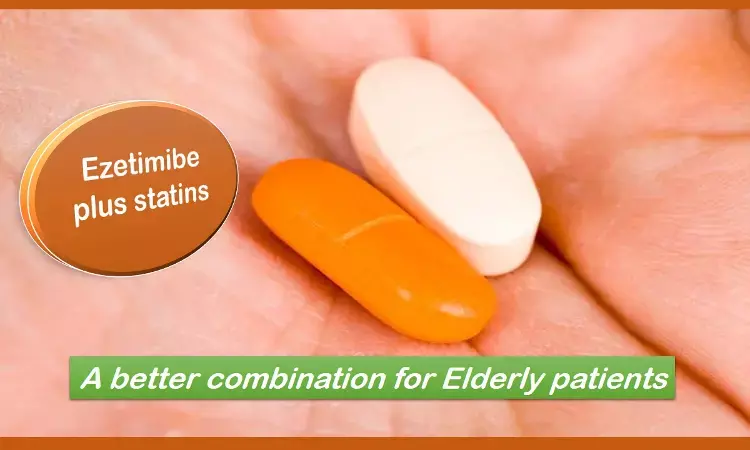- Home
- Medical news & Guidelines
- Anesthesiology
- Cardiology and CTVS
- Critical Care
- Dentistry
- Dermatology
- Diabetes and Endocrinology
- ENT
- Gastroenterology
- Medicine
- Nephrology
- Neurology
- Obstretics-Gynaecology
- Oncology
- Ophthalmology
- Orthopaedics
- Pediatrics-Neonatology
- Psychiatry
- Pulmonology
- Radiology
- Surgery
- Urology
- Laboratory Medicine
- Diet
- Nursing
- Paramedical
- Physiotherapy
- Health news
- Fact Check
- Bone Health Fact Check
- Brain Health Fact Check
- Cancer Related Fact Check
- Child Care Fact Check
- Dental and oral health fact check
- Diabetes and metabolic health fact check
- Diet and Nutrition Fact Check
- Eye and ENT Care Fact Check
- Fitness fact check
- Gut health fact check
- Heart health fact check
- Kidney health fact check
- Medical education fact check
- Men's health fact check
- Respiratory fact check
- Skin and hair care fact check
- Vaccine and Immunization fact check
- Women's health fact check
- AYUSH
- State News
- Andaman and Nicobar Islands
- Andhra Pradesh
- Arunachal Pradesh
- Assam
- Bihar
- Chandigarh
- Chattisgarh
- Dadra and Nagar Haveli
- Daman and Diu
- Delhi
- Goa
- Gujarat
- Haryana
- Himachal Pradesh
- Jammu & Kashmir
- Jharkhand
- Karnataka
- Kerala
- Ladakh
- Lakshadweep
- Madhya Pradesh
- Maharashtra
- Manipur
- Meghalaya
- Mizoram
- Nagaland
- Odisha
- Puducherry
- Punjab
- Rajasthan
- Sikkim
- Tamil Nadu
- Telangana
- Tripura
- Uttar Pradesh
- Uttrakhand
- West Bengal
- Medical Education
- Industry
"Ezetimibe with moderate-dose statins" has better compliance in elderly than high-dose statin regimens

The routine use of high-intensity statins should be considered carefully in elderly patients because of their higher risk of intolerance or adverse events. A recently published post hoc analysis of RACING trial has shown that compared with standard high-dose statin therapy, combination therapy with a moderate-intensity statin plus ezetimibe seems to reduce the risk of cardiovascular events to a similar degree over 3 years in an elderly patient population, and may improve compliance.
Every 1.0-mmol/L reduction in LDL-C provides ∼22% relative risk reduction for major ASCVD events. Despite evidence that LDL-C lowering is effective for reducing risk for ASCVD in the elderly (age >75 years), lipid-lowering therapy (LLT) use declines with increasing age, particularly in those aged >75 years.
In the April issue of the Journal of the American College of Cardiology, a post hoc analysis of the RACING trial investigated the safety and efficacy of this approach compared with high-intensity statin monotherapy in 574 of the 3,780 patients with ASCVD in the original trial (15.2%). This substudy was important to conduct because elderly patients often have been excluded from previous clinical trials of intensive lipid-lowering therapy.
Compared with the rest of the trial population, patients in the elderly group were more likely to be female, had lower BMI, and were more likely to have a history of previous CABG, cerebrovascular accident, and predisposing comorbidities like hypertension and chronic kidney disease.
Among those 75 years or older, there was no significant difference in the occurrence of the primary endpoint in the combination-therapy group vs the high-intensity statin.
Additionally, the combination-therapy group achieved a lower median LDL-C (58 mg/dL) compared with the high-intensity statin group (62 mg/dL) and had significantly fewer discontinuations of therapy (2.3% vs 21) and incidence of new-onset diabetes (10.0 % vs 18.7%).
These findings suggest similar clinical efficacy in event lowering and superior LDL-C lowering with a favorable side effect and safety profile.
Are these results practice changing?
“These results”, comments author Jung-Sun Kim, “have already influenced my practice. I now prefer to use moderate-intensity statins in combination with ezetimibe therapy over high-intensity statin monotherapy, especially for elderly ASCVD patients who have experienced statin-related side effects, as well as those with impaired glucose tolerance such as HbA1c level between 6.0% and 6.5%.”
However, in an accompanying editorial, Christie M. Ballantyne, MD points out that this analysis was underpowered for the subgroup aged > 75 years, and individuals aged > 80 years were excluded from the original study design, limiting the conclusions and generalizability of findings in the elderly population.
Future studies, including pragmatic trials, should go beyond focusing only on the efficacy of new LLTs and test the effectiveness of different approaches to implement LLT in this very important high-risk population.
Source: JACC
1. J Am Coll Cardiol. 2023 Apr, 81 (14) 1339–1349
2. J Am Coll Cardiol. 2023 Apr, 81 (14) 1350–1352
MBBS, MD , DM Cardiology
Dr Abhimanyu Uppal completed his M. B. B. S and M. D. in internal medicine from the SMS Medical College in Jaipur. He got selected for D. M. Cardiology course in the prestigious G. B. Pant Institute, New Delhi in 2017. After completing his D. M. Degree he continues to work as Post DM senior resident in G. B. pant hospital. He is actively involved in various research activities of the department and has assisted and performed a multitude of cardiac procedures under the guidance of esteemed faculty of this Institute. He can be contacted at editorial@medicaldialogues.in.
Dr Kamal Kant Kohli-MBBS, DTCD- a chest specialist with more than 30 years of practice and a flair for writing clinical articles, Dr Kamal Kant Kohli joined Medical Dialogues as a Chief Editor of Medical News. Besides writing articles, as an editor, he proofreads and verifies all the medical content published on Medical Dialogues including those coming from journals, studies,medical conferences,guidelines etc. Email: drkohli@medicaldialogues.in. Contact no. 011-43720751


